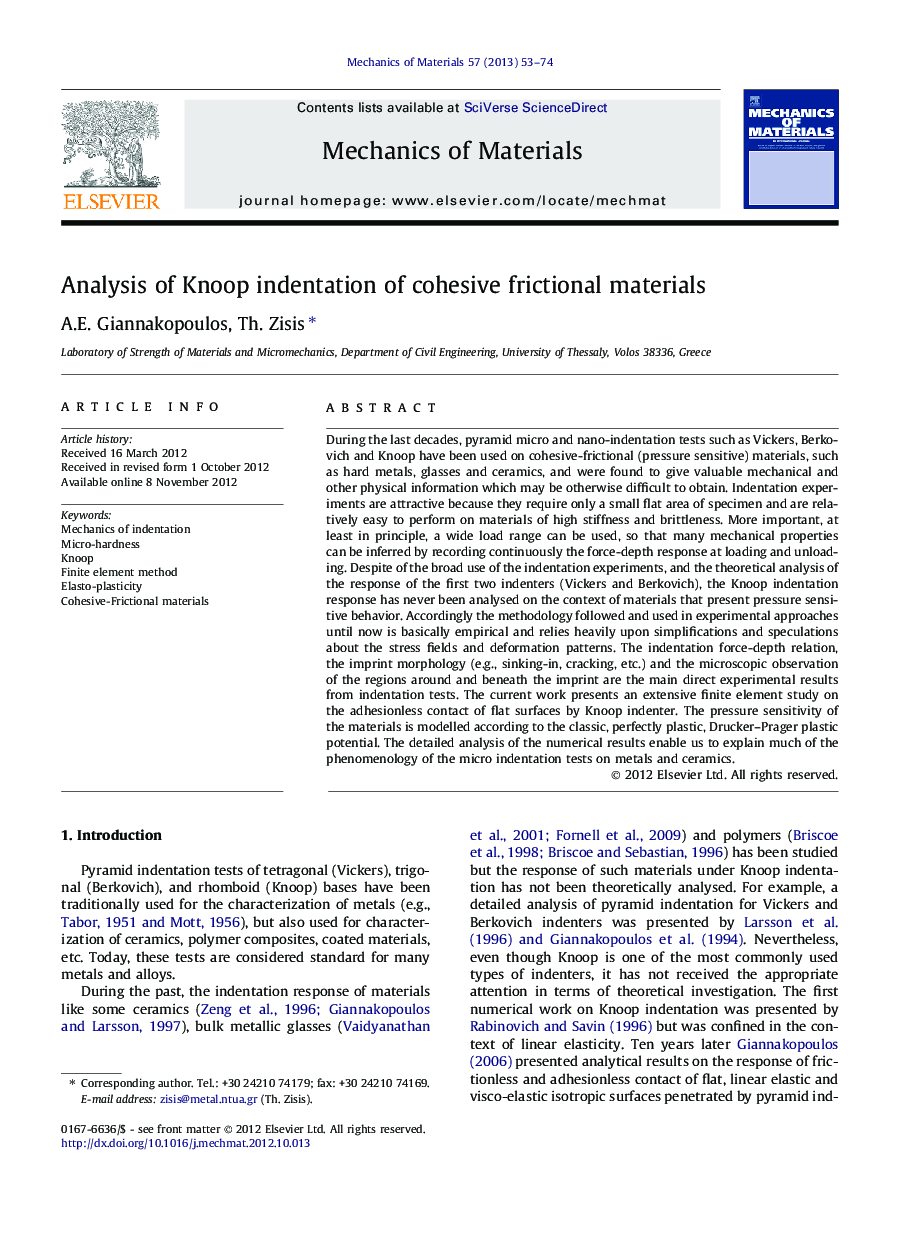| کد مقاله | کد نشریه | سال انتشار | مقاله انگلیسی | نسخه تمام متن |
|---|---|---|---|---|
| 797601 | 1467484 | 2013 | 22 صفحه PDF | دانلود رایگان |

During the last decades, pyramid micro and nano-indentation tests such as Vickers, Berkovich and Knoop have been used on cohesive-frictional (pressure sensitive) materials, such as hard metals, glasses and ceramics, and were found to give valuable mechanical and other physical information which may be otherwise difficult to obtain. Indentation experiments are attractive because they require only a small flat area of specimen and are relatively easy to perform on materials of high stiffness and brittleness. More important, at least in principle, a wide load range can be used, so that many mechanical properties can be inferred by recording continuously the force-depth response at loading and unloading. Despite of the broad use of the indentation experiments, and the theoretical analysis of the response of the first two indenters (Vickers and Berkovich), the Knoop indentation response has never been analysed on the context of materials that present pressure sensitive behavior. Accordingly the methodology followed and used in experimental approaches until now is basically empirical and relies heavily upon simplifications and speculations about the stress fields and deformation patterns. The indentation force-depth relation, the imprint morphology (e.g., sinking-in, cracking, etc.) and the microscopic observation of the regions around and beneath the imprint are the main direct experimental results from indentation tests. The current work presents an extensive finite element study on the adhesionless contact of flat surfaces by Knoop indenter. The pressure sensitivity of the materials is modelled according to the classic, perfectly plastic, Drucker–Prager plastic potential. The detailed analysis of the numerical results enable us to explain much of the phenomenology of the micro indentation tests on metals and ceramics.
Journal: Mechanics of Materials - Volume 57, February 2013, Pages 53–74